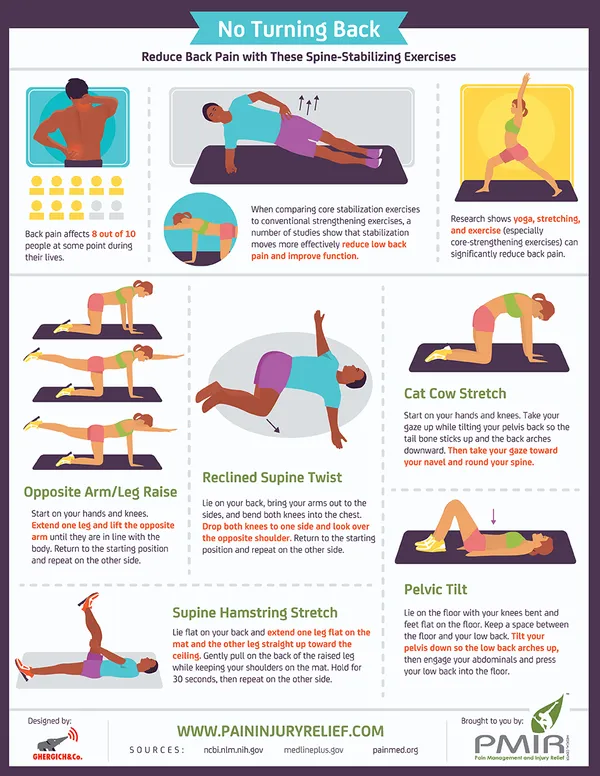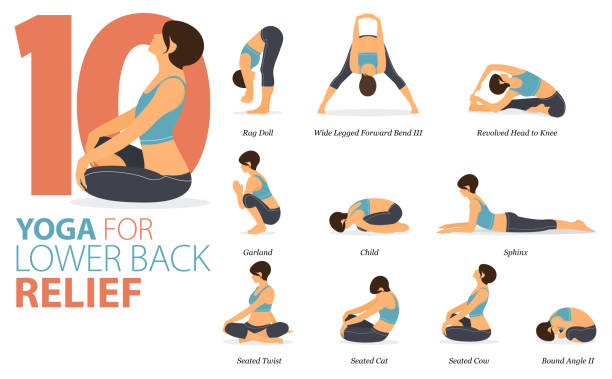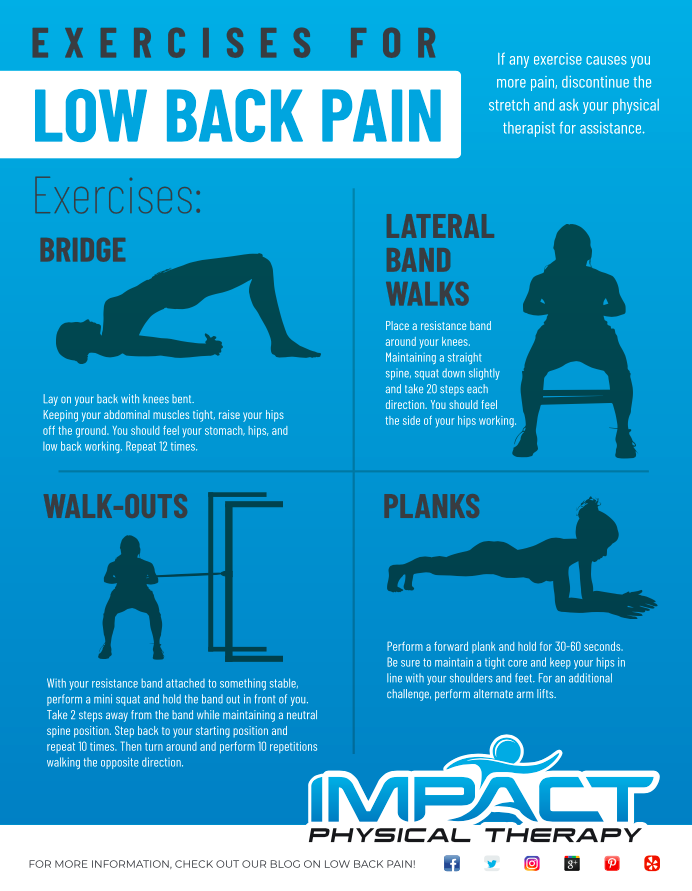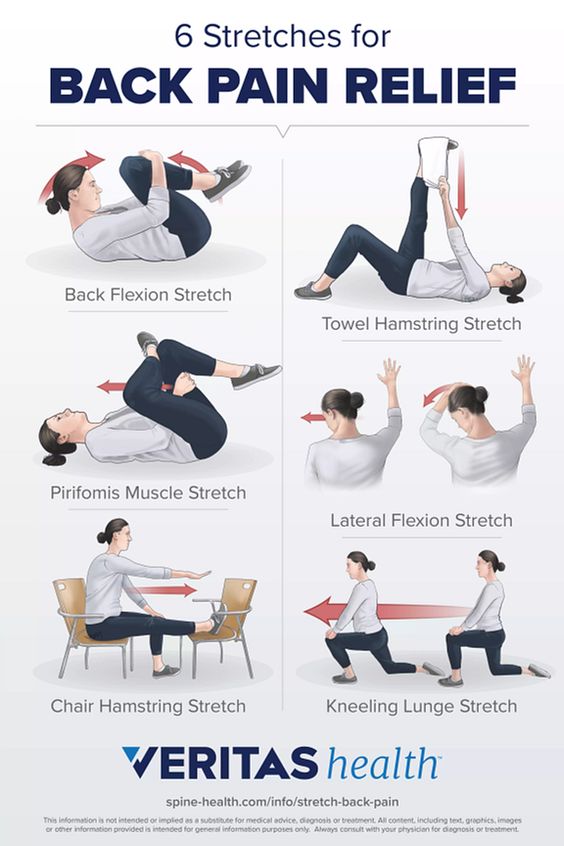Learn the 10 simple exercises that can provide instant relief for your lower back pain – say goodbye to discomfort!
Table of Contents
- Introduction: Say Goodbye to Lower Back Pain!
- Understanding Lower Back Pain
- Warm-Up: Get Ready for Action!
- Exercise 1: The Cat-Cow Stretch
- Exercise 2: The Bridge Lift
- Exercise 3: Knee-to-Chest Stretch
- Not Just Your Back: Full-Body Moves
- Exercise 4: Child’s Pose
- Exercise 5: The Pelvic Tilt
- Keeping It Up: A Daily Routine
- Safety First: Listening to Your Body
- Conclusion: Back to Being Happy
- FAQs: Questions You Might Have
Introduction: Say Goodbye to Lower Back Pain!
We’ll dive into easy exercises that can help soothe your lower back and make you feel awesome! If you’ve ever had that achy sensation in your lower back, you know how uncomfortable it can be. But don’t worry, we’re here to talk about some fun and simple ways to get rid of that lower back pain for good!
Whether you spend a lot of time sitting, have been feeling super tired lately, or just want to take care of your body better, these exercises are perfect for helping you feel better and stronger. Say goodbye to lower back pain and hello to a happier, healthier you!
Understanding Lower Back Pain
Lower back pain can be a real bother, making it hard to sit comfortably or move around like you want to. It might even make you feel super tired. But why does it happen, and how can you feel better?
Why Does My Back Hurt?
One reason your back might ache is from sitting too much or not moving enough. When you don’t use your muscles, they can get stiff and sore. That’s why it’s essential to keep active and do exercises to help strengthen your back.
Lower Back and Tiredness
Have you ever noticed that when your back hurts, you also feel really tired? That’s because the muscles in your lower back help support your body when you move. So when they’re sore, the rest of your body has to work extra hard, which can make you feel worn out. It’s essential to take care of your back so you can have more energy to play and have fun!
Warm-Up: Get Ready for Action!
We’re all set to kickstart our journey towards a healthier back! Before we jump into the exciting exercises, let’s talk about warming up to get your back prepped and geared for action. It’s like giving your back a little pep talk before the real workout begins.

Image courtesy of activebeat.com via Google Images
Stretching Your Back Safely
To begin, we’re going to gently stretch your back to loosen up those tight muscles. Imagine your back muscles as sleepy little cats waking up from a cozy nap. By stretching, you’re helping them limber up and get ready to move around, just like a cat does before it stretches out its body. These simple stretches will make your back feel less stiff and more flexible, setting the stage for the exercises ahead.
Exercise 1: The Cat-Cow Stretch
We’re going to learn a fun exercise that’ll have you moving like a cat and a cow to stretch your back! This stretch is super gentle and can help ease any tension you might be feeling in your lower back.
How to Do the Cat-Cow Stretch:
1. Start on your hands and knees, with your wrists directly under your shoulders and your knees under your hips.
2. Inhale as you arch your back, dropping your belly towards the floor, and lifting your head and tailbone towards the ceiling (this is the “cow” part).
3. Exhale as you round your back towards the ceiling, tucking your chin to your chest and bringing your tailbone towards your knees (this is the “cat” part).
4. Repeat this movement, flowing back and forth between the cow and cat positions, breathing deeply as you stretch your spine.
This stretch is great for warming up your back muscles and increasing flexibility in your spine. It can help alleviate lower back pain and improve your posture over time.
Exercise 2: The Bridge Lift
Are you ready to learn a cool move that can help ease your lower back pain? Let’s talk about the bridge lift exercise! Imagine yourself lifting your bottom up like a bridge to give your back some relief.

Image courtesy of www.istockphoto.com via Google Images
How to Do the Bridge Lift
1. Start by lying on your back with your knees bent and your feet flat on the floor. Keep your arms by your sides.
2. Gently squeeze your bottom muscles and push through your heels to lift your hips off the ground. Your body should form a straight line from your shoulders to your knees.
3. Hold the position for a few seconds, then slowly lower your hips back down to the ground.
4. Repeat this movement for a few reps to give your lower back a good stretch and strengthen your muscles.
Benefits of the Bridge Lift
The bridge lift exercise helps to strengthen your back and core muscles, which can support your spine and improve your posture. It also stretches the hip flexors and opens up the chest, promoting better flexibility and mobility.
By incorporating the bridge lift into your routine, you can work towards relieving lower back pain and feel more comfortable throughout the day. Remember to listen to your body and stop if you feel any discomfort.
Exercise 3: Knee-to-Chest Stretch
When your lower back is feeling achy and tight, one of the best ways to relieve the discomfort is by doing the knee-to-chest stretch. This gentle exercise not only helps to soothe your lower back pain but also gives your knees a cozy hug, making you feel relaxed and comfortable.
How to Do the Knee-to-Chest Stretch
To perform the knee-to-chest stretch, follow these simple steps:
1. Lie down on your back on a soft surface, like a yoga mat or carpet.
2. Slowly bring one knee up towards your chest, using your hands to gently pull it closer if needed.
3. Hold the position for about 20-30 seconds, feeling the stretch in your lower back and hip.
4. Release the leg back to the starting position and repeat with the other leg.
5. Aim to do this stretch 2-3 times on each leg to help loosen up your lower back muscles.
Remember to breathe deeply and relax while performing this stretch to get the most benefit from it.
By incorporating the knee-to-chest stretch into your routine, you can give your lower back the attention it needs to feel better and alleviate any knee pain that may be bothering you as well.
Not Just Your Back: Full-Body Moves
When it comes to dealing with lower back pain, it’s essential to understand that sometimes, the discomfort in your back can affect other parts of your body too. That’s why incorporating full-body exercises into your routine can not only help alleviate your lower back pain but also address other related issues like tension headaches and restless leg syndrome.

Image courtesy of www.istockphoto.com via Google Images
Get Rid of That Headache
Experiencing a tension headache along with your lower back pain can be extra bothersome. But fear not! There are exercises you can do to help ease the tension in your head and neck, leading to overall relief. Simple movements that stretch and release tension in the muscles of your neck and shoulders can work wonders to make you feel better.
Relaxed Legs for a Good Night’s Sleep
Restless leg syndrome, which commonly occurs at night and can disrupt your sleep, is another issue that may be linked to your lower back pain. Incorporating exercises that focus on relaxing and calming your leg muscles can help reduce the urge to move your legs incessantly, allowing you to get a peaceful night’s sleep. These movements can also alleviate the discomfort associated with restless leg syndrome and make you feel more at ease.
Exercise 4: Child’s Pose
Child’s Pose is a super-relaxed yoga pose that can do wonders for your achy back. Imagine curling up like a little ball, just like when you play hide-and-seek where you tuck your body in. This stretch is all about taking a break and giving your lower back a gentle stretch. Let’s learn how to do it!
How to Do Child’s Pose:
To get into Child’s Pose, start by kneeling on the floor. Then, slowly bend forward, reaching your arms out in front of you as far as they can go. Your forehead should rest on the ground, and your hips should sink back toward your heels. Take slow, deep breaths in this cozy position.
Why Child’s Pose Helps:
Child’s Pose helps stretch out your lower back, hips, and thighs. It can release tension in your back muscles and make you feel calm and relaxed. This pose is like giving your back a sweet, gentle hug to ease any discomfort.
Next time you feel your back starting to ache, find a quiet space and try out this soothing Child’s Pose. It’s a fantastic way to take a break, relax, and show some love to your lower back!
Exercise 5: The Pelvic Tilt
In this exercise, we are going to focus on your lower back by doing something called a pelvic tilt. This simple move can bring a lot of comfort to your back and make you feel great!

Image courtesy of impactptaz.com via Google Images
The Pelvic Tilt Move
To do the pelvic tilt, lie down on your back with your knees bent and your feet flat on the floor. Place your hands by your sides. Now, gently tighten your stomach muscles and press your lower back into the floor. Hold this position for a few seconds and then relax.
| Exercise Name | Description |
|---|---|
| 1. Cat-Cow Stretch | Start on your hands and knees, arching your back up and down like a cat stretching. |
| 2. Child’s Pose | Sit back on your heels with your arms stretched out in front of you, lowering your chest to the floor. |
| 3. Pelvic Tilt | Lie on your back with your knees bent, gently tilt your pelvis up and down to engage your core and lower back muscles. |
| 4. Glute Bridges | Lie on your back with your knees bent, lift your hips off the floor by squeezing your glutes. |
| 5. Piriformis Stretch | Sit with one ankle crossed over the opposite knee, gently press down on your knee to stretch the piriformis muscle. |
| 6. Seated Spinal Twist | Sit with your legs extended, twist your torso to one side while looking over your shoulder. |
| 7. Standing Forward Fold | Stand with your feet hip-width apart, hinge at the hips to fold forward and reach for your toes. |
| 8. Cobra Pose | Lie on your stomach, place your hands under your shoulders, and lift your chest off the ground while keeping your pelvis grounded. |
| 9. Quadruped Arm/Leg Raise | Start on your hands and knees, lift one arm and the opposite leg simultaneously while keeping your core engaged. |
| 10. Standing Side Bend | Stand with your feet hip-width apart, raise one arm overhead and lean to the opposite side to stretch your side body. |
Repeat this movement a few times, making sure to breathe slowly and steadily as you do it. You should feel your lower back muscles working and stretching, which is a good sign that they are getting stronger and more flexible.
Why It Helps Your Lower Back
The pelvic tilt exercise is great for your lower back because it helps to strengthen the muscles that support your spine. By doing this move regularly, you can improve your posture and reduce the strain on your lower back, which can help to ease any pain or discomfort you might be feeling.
Remember, it’s essential to listen to your body while doing this exercise. If you feel any sharp pain or discomfort, stop immediately and talk to a grown-up or a healthcare provider.
Keeping It Up: A Daily Routine
In order to keep your lower back feeling strong and healthy, it’s important to make these exercises a regular part of your daily routine. By doing so, you can reduce the chances of experiencing chronic fatigue syndrome and keep your back pain at bay.
Making a Habit
One way to make sure you don’t forget to do your exercises is to incorporate them into your daily schedule. You can set a reminder on your phone, or do them first thing in the morning before starting your day. You could even make it a fun game by charting your progress and rewarding yourself for sticking to your routine!
When to Exercise
The best times to stretch and strengthen your back are when your body is feeling relaxed and flexible. For some people, this might be in the morning to start the day off right. For others, it might be in the evening to wind down after a long day. Listen to your body and choose a time that works best for you!
Safety First: Listening to Your Body
In this section, we’ll talk about the importance of doing exercises correctly and not overdoing it, especially if someone has arthritis.

Image courtesy of dailyinfographic.com via Google Images
Staying Safe with Lower Back Pain and Rheumatoid Arthritis
When you have lower back pain or conditions like rheumatoid arthritis, it’s crucial to listen to your body. Make sure you talk to a doctor or physical therapist before starting any new exercise routine, especially if you have arthritis. They can give you the best advice on what exercises are safe for you.
Avoiding Overdoing It
It’s essential to know your limits and not push yourself too hard. If your body is telling you to stop, listen to it. Overdoing it can lead to more pain and discomfort, so it’s better to take it slow and steady. Remember, it’s not a race – the goal is to feel better, not to strain yourself.
Adjusting Exercises for Arthritis
If you have arthritis, you may need to make some adjustments to the exercises to avoid putting too much stress on your joints. For example, you could try doing movements in a gentler way or using props like pillows for support. Always focus on what feels comfortable and safe for your body.
Conclusion: Back to Being Happy
Throughout this blog post, we’ve explored various easy exercises to help alleviate your lower back pain and get you back to feeling awesome again. By incorporating these simple movements into your daily routine, you can make significant strides in improving your well-being and overall quality of life.
Finding Relief Through Movement
By engaging in exercises like the Cat-Cow Stretch, Bridge Lift, and Knee-to-Chest Stretch, you are actively working to strengthen and stretch the muscles in your lower back. These movements not only target the source of your pain but also contribute to increased flexibility and mobility.
Enhancing Overall Wellness
Moreover, the full-body exercises we discussed can do more than just alleviate lower back pain. They also have the potential to reduce tension headaches, ease restless leg syndrome, and promote relaxation throughout your body. By addressing these various issues simultaneously, you can experience a more holistic approach to your well-being.
Consistency is Key
Remember, making these exercises a regular part of your daily routine is crucial for maximizing their benefits. By establishing a habit and finding the right time to fit them into your schedule, you can ensure long-term relief from lower back pain and other associated discomforts.
Listening to Your Body
As we’ve emphasized, listening to your body and practicing these exercises safely is paramount. It’s essential to pay attention to any discomfort or strain, especially if you have conditions like rheumatoid arthritis. By being mindful of your body’s signals, you can perform these exercises effectively and without risk of injury.
By incorporating these exercises and lifestyle changes, you can say goodbye to lower back pain and hello to a happier, healthier you!
FAQs: Questions You Might Have
Is it normal to have a tension headache while experiencing lower back pain?
Yes, sometimes when your back is feeling achy, it can cause tension headaches. By doing exercises that relieve your lower back pain, you might also find some relief for your headache.
Can the exercises help with knee pain as well?
Absolutely! The stretches and movements we’ve talked about can also benefit your knees. By strengthening the muscles around your knees and improving your overall posture, you may experience less knee pain over time.
How can exercises for lower back pain help with chronic fatigue syndrome?
When you’re in pain, whether it’s in your back or elsewhere, your body can become more tired. By doing exercises that target your lower back, you might reduce the discomfort that contributes to your fatigue, giving you more energy throughout the day.
Do these exercises help with restless leg syndrome?
While the primary focus of these exercises is on your lower back, many movements can also benefit restless legs. By promoting relaxation and improved circulation, these exercises may help calm your legs and reduce nighttime discomfort.
Is it safe to do these exercises if you have rheumatoid arthritis?
If you have rheumatoid arthritis, it’s crucial to consult with your healthcare provider before starting any new exercise routine. They can help you modify the movements to suit your needs and ensure you’re not aggravating your condition.





